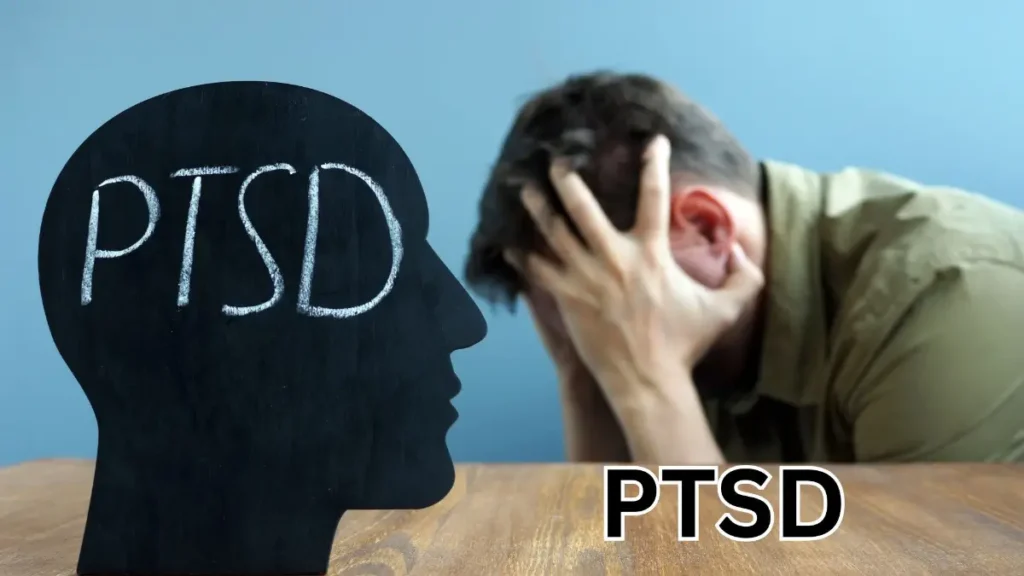Adults Living with PTSD

Navigating PTSD: Key concepts, steps and working strategies
Post Traumatic Stress Disorder (PTSD) is a condition that affects millions of people worldwide, yet it remains misunderstood by many. As an adult navigating life with PTSD, understanding the complexities of this disorder, recognizing the symptoms, and seeking appropriate treatment is essential for managing its impact on daily life. This article explores the intricacies of PTSD, including its symptoms, causes, treatment options, and strategies for living a fulfilling life despite the challenges it presents.
Understanding PTSD
What is PTSD? PTSD, or Post Traumatic Stress Disorder, is a mental health condition triggered by experiencing or witnessing a traumatic event. Such events might include natural disasters, war, physical or sexual assault, accidents, or any situation that leaves a deep psychological impact. While it is normal to experience stress after a traumatic event, PTSD occurs when these stress responses persist long after the event has passed, interfering with daily life.
Complex PTSD (C-PTSD) In addition to standard PTSD, there is a subtype known as Complex PTSD (C-PTSD) or Complex Post Traumatic Stress Disorder. C-PTSD is often the result of prolonged or repeated trauma, such as ongoing abuse, captivity, or living in a war zone. Unlike PTSD, which can develop after a single traumatic event, Complex PTSD is associated with continuous exposure to trauma, leading to more severe and pervasive symptoms.
Symptoms of PTSD The symptoms of PTSD are diverse and can manifest in various ways. They are typically grouped into four main categories:
- Intrusive Memories: These include flashbacks, nightmares, and severe emotional distress when reminded of the trauma. Intrusive memories can make it difficult to move on from the event, as they repeatedly force the individual to relive the trauma.
- Avoidance: People with PTSD often go to great lengths to avoid reminders of the traumatic event. This can include avoiding certain places, people, or activities, as well as suppressing thoughts and feelings related to the trauma.
- Negative Changes in Thinking and Mood: This category includes symptoms like negative thoughts about oneself or others, hopelessness, memory problems related to the trauma, and feelings of detachment from friends and family.
- Changes in Physical and Emotional Reactions: Individuals may experience hypervigilance, being easily startled, irritability, difficulty sleeping, or engaging in self-destructive behavior.
Complex PTSD Symptoms Complex trauma PTSD symptoms often overlap with those of standard PTSD but can include additional challenges such as difficulty regulating emotions, feeling distrustful or detached from others, and experiencing persistent feelings of shame or guilt. The pervasive nature of the trauma in C-PTSD makes it a more challenging condition to treat and manage.
Causes of PTSD
Traumatic Events The primary cause of PTSD post traumatic stress disorder is exposure to a traumatic event. This might include life-threatening situations, violent personal assaults, or severe accidents. Not everyone who experiences trauma will develop PTSD, as individual responses to trauma vary significantly.
Complex Trauma Complex Post Traumatic Stress Disorder arises from prolonged exposure to trauma, particularly in cases where the individual feels trapped or unable to escape the situation. Examples include long-term domestic violence, childhood abuse, or prolonged military combat.
Genetic and Biological Factors Some individuals may be more susceptible to developing PTSD due to genetic factors or pre-existing mental health conditions. Additionally, biological factors, such as changes in brain structure and function, can play a role in the development of Post Traumatic Stress Disorder.
Environmental and Social Factors A lack of support following a traumatic event, ongoing stress, or living in a high-risk environment can increase the likelihood of developing PTSD. Social isolation, particularly in the aftermath of trauma, can exacerbate symptoms and make recovery more challenging.
Recognizing the Symptoms of PTSD
Intrusive Thoughts and Memories One of the hallmark symptoms of PTSD is the presence of intrusive thoughts and memories related to the traumatic event. These can manifest as flashbacks, where the individual feels as though they are reliving the trauma, or nightmares that disrupt sleep.
Avoidance Behavior Avoidance is a common coping mechanism for those with PTSD. This might involve avoiding places, activities, or people that trigger memories of the trauma. While avoidance can provide temporary relief, it often leads to increased isolation and can prevent individuals from processing the trauma.
Negative Changes in Mood People with PTSD often experience negative changes in their mood and thinking. This can include feelings of hopelessness, guilt, or shame, as well as difficulty experiencing positive emotions. Individuals may also feel detached from loved ones, leading to strained relationships.
Hyperarousal Hyperarousal refers to the heightened state of alertness that many people with PTSD experience. This can manifest as being easily startled, feeling constantly on edge, or having difficulty sleeping. Hyperarousal can make it challenging to relax and can contribute to feelings of irritability or anger.
Symptoms of Complex PTSD In addition to the symptoms outlined above, Complex PTSD may include difficulties with emotional regulation, dissociation, and a pervasive sense of helplessness or despair. Individuals with C-PTSD may struggle with maintaining healthy relationships and may have a distorted sense of self, often feeling unworthy or damaged.
Diagnosing PTSD
PTSD Testing and Diagnosis Diagnosing PTSD typically involves a thorough assessment by a mental health professional. This may include a detailed discussion of symptoms, medical history, and the nature of the traumatic event. PTSD testing may involve standardized questionnaires or assessments designed to evaluate the severity of symptoms.
Complex PTSD Diagnosis Diagnosing Complex PTSD can be more challenging due to the overlap with other mental health conditions, such as borderline personality disorder or major depression. A comprehensive evaluation by a trauma-informed therapist is essential for accurate diagnosis and treatment planning.
The Role of a Therapist for Trauma A therapist specializing in trauma can provide the support and guidance needed to navigate the complexities of PTSD and C-PTSD. This might involve cognitive assessments, structured interviews, and collaboration with other healthcare providers to develop a comprehensive treatment plan.
Treatment Options for PTSD
Cognitive Processing Therapy (CPT) Cognitive Processing Therapy (CPT) is a type of cognitive-behavioral therapy specifically designed to help individuals with PTSD. CPT focuses on changing the negative thought patterns and beliefs that arise from the traumatic experience. By challenging these thoughts, individuals can begin to make sense of the trauma and reduce the emotional impact it has on their lives.
Prolonged Exposure Therapy Prolonged Exposure Therapy is another effective treatment for PTSD. This therapy involves gradually exposing individuals to memories of the traumatic event in a controlled and safe environment. The goal is to help individuals process the trauma, reduce avoidance behaviors, and diminish the intensity of the fear associated with the memories.
Eye Movement Desensitization and Reprocessing (EMDR) EMDR is a therapy that combines exposure therapy with guided eye movements to help individuals process traumatic memories. It is particularly effective for those who have difficulty talking about their trauma, as the eye movements help facilitate the processing of distressing memories.
Medication for PTSD Medication can be an important part of treatment for Post Traumatic Stress Disorder. Antidepressants, such as selective serotonin reuptake inhibitors (SSRIs), are commonly prescribed to help manage symptoms like depression and anxiety. Other medications, such as mood stabilizers or antipsychotics, may be used depending on the individual's symptoms and needs.
Complex PTSD Treatment Treating Complex PTSD often requires a more nuanced approach. In addition to the therapies mentioned above, individuals with C-PTSD may benefit from therapies that focus on emotional regulation, building self-esteem, and developing healthy interpersonal relationships. Long-term therapy is often necessary to address the deep-rooted effects of prolonged trauma.
The Importance of Support Networks
Building a Support System Having a strong support system is crucial for individuals with PTSD. This might include family, friends, support groups, or online communities. A support system can provide emotional support, practical assistance, and a sense of connection, all of which are vital for recovery.
Support Groups Support groups, whether in person or online, offer a safe space for individuals with PTSD to share their experiences and connect with others who understand their struggles. These groups can provide a sense of community and reduce feelings of isolation.
Role of Family and Friends Family and friends play a crucial role in supporting individuals with PTSD. By educating themselves about the condition, they can offer informed and compassionate support. It's also important for loved ones to encourage the individual to seek professional help if needed and to be patient and understanding during the recovery process.
Strategies for Managing PTSD in Daily Life
Mindfulness and Relaxation Techniques Mindfulness and relaxation techniques, such as meditation, deep breathing exercises, or progressive muscle relaxation, can help individuals manage the stress and anxiety associated with PTSD. These practices can help ground individuals in the present moment and reduce the impact of intrusive thoughts and hyperarousal.
Developing a Routine Having a structured daily routine can provide a sense of stability and control for individuals with PTSD. A routine can help reduce feelings of chaos and unpredictability, making it easier to manage symptoms and focus on recovery.
Healthy Coping Mechanisms It's important to develop healthy coping mechanisms for managing stress and emotional distress. This might include physical exercise, creative outlets, or spending time in nature. Avoiding unhealthy coping strategies, such as substance abuse or self-isolation, is crucial for long-term recovery.
Setting Boundaries Setting boundaries is essential for individuals with PTSD, particularly in relationships and social situations. This might involve limiting exposure to triggering environments or people, prioritizing self-care, and communicating your needs to others.
Long-Term Outlook and Recovery
PTSD Treatment and Recovery Recovery from PTSD is a long-term process that involves ongoing therapy, self-care, and the support of loved ones. While some individuals may fully recover from PTSD, others may continue to experience symptoms throughout their lives. The goal of treatment is to reduce the severity of symptoms, improve quality of life, and equip individuals with the tools they need to manage their condition effectively.
Living with PTSD Living with PTSD means recognizing and accepting the condition while taking proactive steps to manage it. This might involve ongoing therapy, medication, and the use of coping strategies to navigate daily challenges. It's important to celebrate small victories and be patient with oneself during the recovery journey.
Resilience and Personal Growth Despite the challenges, many individuals with PTSD find that their experiences lead to personal growth and resilience. By facing and overcoming the difficulties associated with PTSD, individuals can develop a deeper understanding of themselves, a greater sense of empathy, and a stronger connection to others who have faced similar struggles.
Hope and Healing There is hope for healing even in the most severe cases of PTSD. Advances in therapy, medication, and support systems mean that individuals with PTSD have more resources than ever before to help them recover. It's important to stay hopeful and committed to the healing process, knowing that recovery is possible with time, effort, and the right support.
Conclusion on Navigating PTSD
Navigating Post Traumatic Stress Disorder (PTSD) as an adult is a complex and often challenging journey. Understanding the nature of the disorder, recognizing the symptoms, and seeking appropriate treatment are essential steps toward recovery. Whether dealing with standard PTSD or Complex PTSD (C-PTSD), the importance of professional help, support systems, and self-care cannot be overstated.
The impact of PTSD on daily life can be profound, affecting everything from relationships to work to overall well-being. However, with the right tools and support, it is possible to manage the symptoms, reduce their impact, and lead a fulfilling life.
The journey to recovery may be long, but it is also filled with opportunities for growth, resilience, and renewed strength. By embracing the healing process and taking proactive steps to address PTSD, individuals can navigate the challenges of this condition and move toward a future filled with hope and possibility.
Whether through therapy, support groups, or personal coping strategies, there are many paths to healing. It's important to remember that you are not alone in this journey—there is support available, and with time and effort, recovery is within reach.


